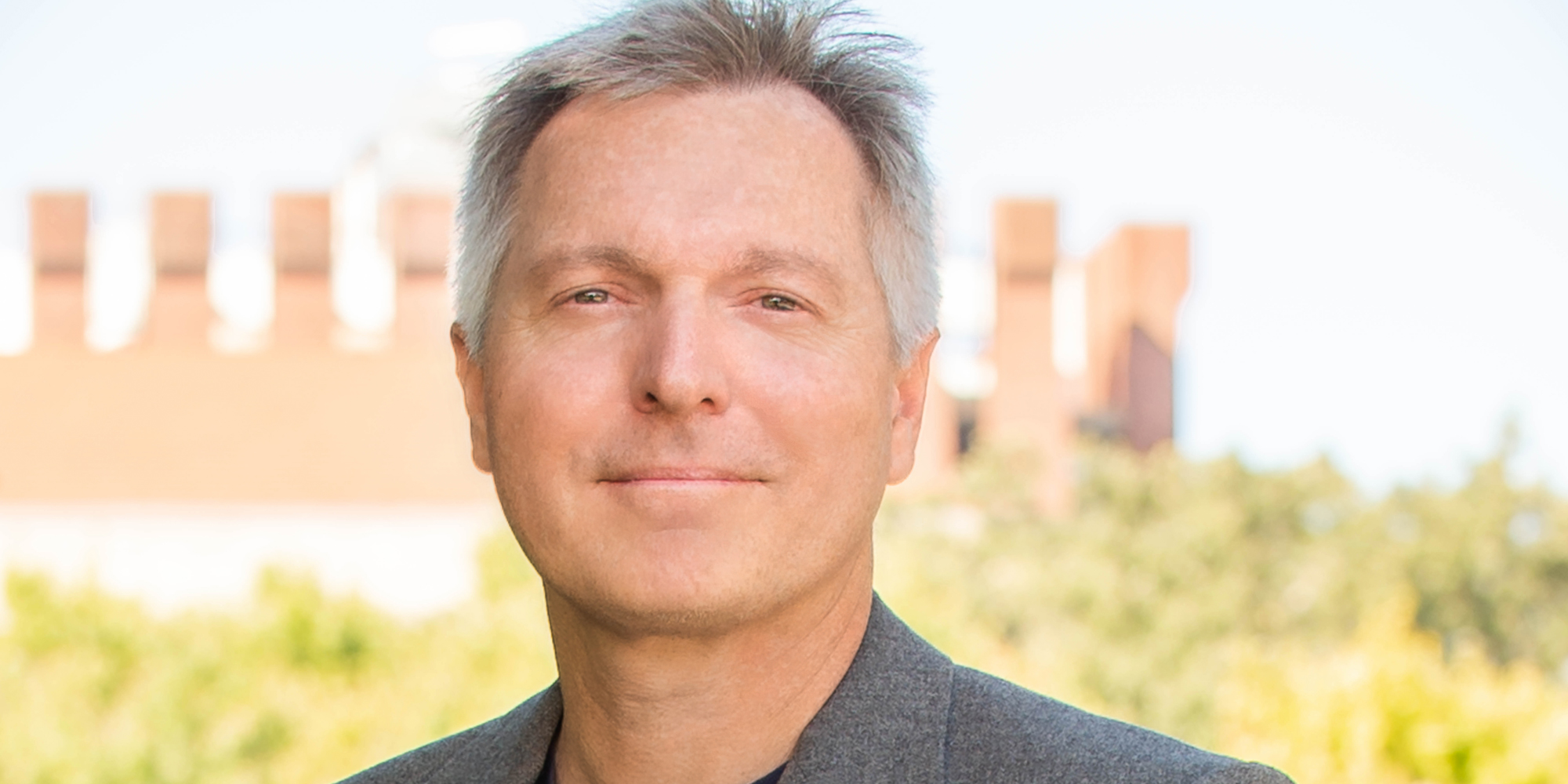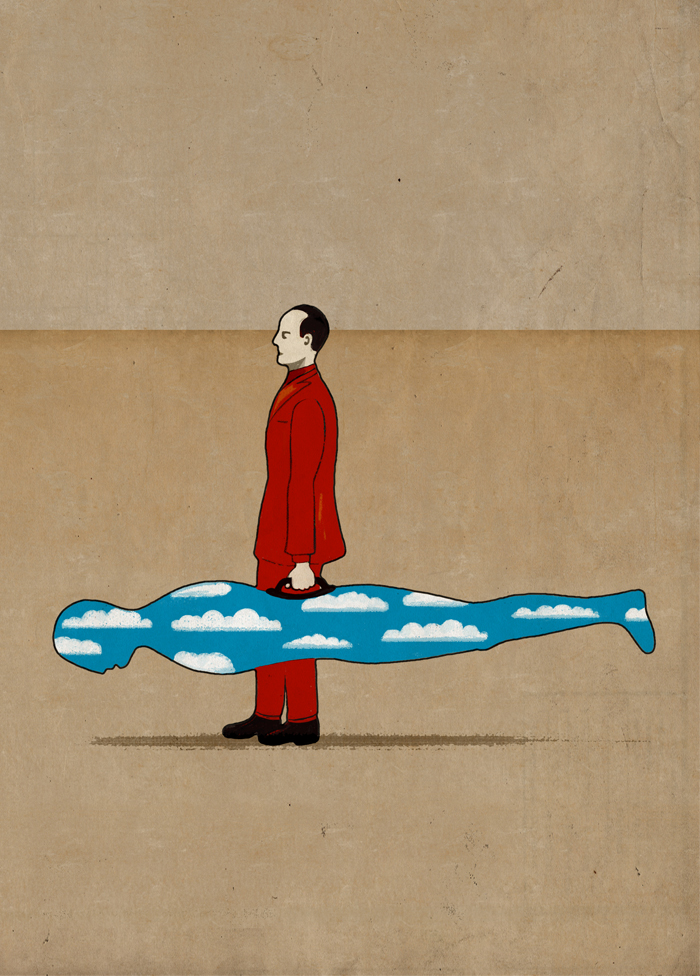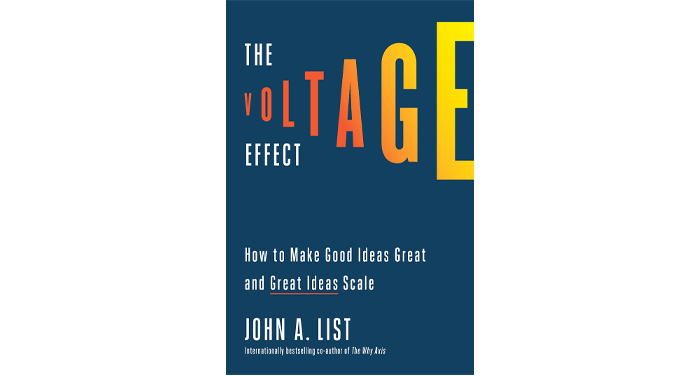
“There is no single quality that distinguishes ideas that have the potential to succeed at scale from those that don’t,” John A. List writes. “But there are five specific traits that scalable ideas must possess.” (Photography by John Boehm)
An economist’s advice on when to fold your hand in favor of the next opportunity.
In a new book, The Voltage Effect: How to Make Good Ideas Great and Great Ideas Scale (Currency, 2022), UChicago economist John A. List explains what makes an idea scalable to a larger audience, size, and impact. Drawing on his experience advising organizations including Uber, Lyft, the Chicago White Sox, and the federal government, List identifies five key signatures of ideas with scaling potential and four secrets entrepreneurs can use to grow their ideas successfully, or, in the book’s parlance, to increase their voltage. In this excerpt from chapter eight, “Quitting Is for Winners,” List shows how opportunity costs and sunken costs sometimes make throwing in the towel a virtue.—Laura Demanski, AM’94

When I was growing up, all of the men in my family were truck drivers (my grandfather, August Sr., my father, August Jr., and my older brother, August III!), and I had been told that I would be one, too. Yet I dreamed of a different life, even if I didn’t know exactly what that life might look like or where to find it. Golf, however, was a door that opened a whole new horizon of possibilities to me, since I very well might not have gone to college at all had it not been for the sport.
By attaining a four-year degree, I would hop up a rung on the socioeconomic ladder and gain access to opportunities withheld from my parents and grandparents. Golf had gotten me this far, so the best way I could imagine prospering was by making it my future career. If I stuck it out and gave the sport my all, was there a chance I could make it as a professional? I believed the answer was yes, though in retrospect I was a victim of my own confirmation bias, conveniently focusing on the tournaments I won while ignoring the empirical evidence of the ones I lost. I had no trouble remembering the good rounds—shooting 32 on the front nine of a prestigious tournament, for instance—but conveniently blocked out the 41 on the back nine that cost me first place. As I packed up my belongings and left my childhood home for the University of Wisconsin–Stevens Point, playing on the PGA tour was the dream I clung to. And why shouldn’t I? I believed I could scale my past successes as a golfer into future ones on the PGA tour.
But then something surprising happened during my very first year in college that changed the trajectory of my life. About midway through our fall golf season, I had an off weekend, so I returned home to visit my family. When I went out to Cherokee Country Club in Madison, Wisconsin, to hone my game that Friday morning, there happened to be a bunch of college golfers at Cherokee, including some of the older players I used to compete against in high school—golfers like Steve Stricker from the University of Illinois and Jerry Kelly from the University of Hartford, both of whom have subsequently had long and successful PGA careers. I had not seen them for a few years, so I welcomed the chance to find out how my skills compared.
Back in high school, I’d managed to stay competitive, even though I was a few years younger than them. Now, however, something had dramatically changed. As we all worked on the practice range, something felt amiss. Incredibly, they had become Jack Nicklauses, while I was stuck as John List. Yet rather than accept the reality of this fact, I brushed off the initial episode. They were always better ball-strikers than me, I told myself, but I always got them back around the greens. Plus, I reminded myself, this is just practice. It’s the score of the actual game that matters, so let’s see how their scores match up against mine.
After they had all teed off, I followed by playing my round with a few friends. Same tees, same course, same weather conditions. The crushing outcome was that both Steve and Jerry scored in the high 60s, as did many of the dozen or so other golfers out with them (including a high schooler named Mario Tiziani, now also a professional golfer), and while I thought I played pretty well, I shot a 75. For those not familiar with golf scoring, at this level that difference was akin to an A+ versus a D.
That night, rather than sleep, I did what any data guy would do: I researched all of their golf scores for the past several years, comparing them to what I had scored on the same courses. I did the same all day Saturday and Sunday. This was not easy work; since there was no internet back then, it took two solid days in the library digging through old local newspapers for data. By the end of that weekend, as I drove back to Stevens Point, sleepless, I came to terms with the fact that no matter how much I cared about golf and practiced it—and no matter what it symbolized for me—I was never going to be good enough to make it onto the PGA Tour, or even come close. I was playing fine for a collegiate golfer, but figuring out how to shave those last several strokes off my score necessary to compete at the highest levels was unfathomable. Suddenly I was unable to delude myself further. Reality had intervened and revealed my pro-golfer aspirations for what they were: a false positive.
My talent had gotten me this far, but as a career, it just didn’t scale. Pursuing it past this point would only lead to a crushing voltage drop and perhaps even more crushing disappointment. So I decided it was time to quit on my dream.
Making this decision wasn’t easy. It went against the values I had learned as a child growing up in small-town Wisconsin, the kingdom of the legendary Green Bay Packers coach Vince Lombardi, who famously said, “Winners never quit and quitters never win.” This was the local culture I was steeped in. I was a product of it, as were my supportive parents, who believed in my golf career and told me to stay resilient and never give up.
This wasn’t a uniquely midwestern phenomenon. American culture as a whole tells us that if we refuse to quit, if we just hang on a little longer and give a little more, then all our dreams will come true. This is buttressed by the proliferation of success stories on social media that all seem to inevitably hit the same note: “Thankfully I didn’t quit and persevered through all of the setbacks.” This success should be applauded, but for every one of these feel-good stories, there are likely a hundred thousand people who toil away and never get to the finish line, never get to do the victory lap. Where are the tweets from these people? Who is talking about how they could have accomplished something really great if they’d quit something else twenty years ago and tried an entirely different path? How many lifesaving drugs, innovative new products, and bold policy interventions has our society lost because people refused to quit pursuing unscalable dreams? These are tragic and unwritten stories—unwritten because they have not had the chance to play out in reality, since from birth we are told we shouldn’t quit.
But what if I told you that achieving something great often means quitting—that is, giving up a dream, pursuit, or career path that is going nowhere, in exchange for one where you can make a greater contribution?
In my case, once I gave up my dream of professional golfing, I turned my attention to the one thing that I had come to believe I did have a true talent—and passion—for: economics. In 1992, I graduated with an economics degree from UW–Stevens Point and received my doctorate four years later from the University of Wyoming.
After completing my PhD, I applied for 150 tenure-track jobs. I got turned down by 149 of them, yet I wasn’t shaken by this less than enthusiastic embrace from my chosen field. Because unlike golf, economics was an area where I knew I was good enough to make a mark. While I didn’t have a fancy Ivy League degree, the response to my research suggested I had the right kind of mind. So this time I heeded Lombardi’s advice and persisted. I threw myself into the fieldwork that has since defined my career at the one school that wanted me, the University of Central Florida.
It paid off. In some alternate corner of the multiverse, John A. List is a golf “teaching pro” at a second-rate country club quoting Vince Lombardi to the clients he gives lessons to. Not the worst existence, but not the best, either. Thankfully, in this universe I’m me, constantly feeding my own curiosity with new field experiments and new science. I’ve done a few things I’m proud of, and maybe even helped some people. As a golfer, I simply wouldn’t have made much of an impact—not because economists are inherently more valuable to society than golfers (lots of professional golfers inspire children and contribute to social causes, and club pros do wonderful things as well) but simply because I am better at economics than at golf, which made me more likely to successfully contribute things of social value. Put another way, my skills as an economist were more scalable than my skills as a golfer.
In cases like these, the best thing you can do is quit. It may be a wrenching decision, but I would argue that getting good at quitting is one of the secrets for scaling successfully. Indeed, I believe that not only do people, companies, and organizations not quit enough, they also don’t quit soon enough.
Which raises an inescapable question: how do you know when to quit?

It’s perhaps no coincidence that the field I turned to after giving up on my golf career was a discipline that could scientifically explain why I had made the right choice. That explanation can be found in one of the bedrock concepts of economics: opportunity cost, or the gains you miss out on when you choose one option over another. We can think of opportunity cost as an attempt to quantify the path not taken, which often means the path we would have taken if only we’d quit the path we were on. In my case, pursuing a golf career would have cost me the chance to teach economics to eager young minds, publish lots of scientific studies and books, and advise various leaders.
I saw a useful example of the dynamics of opportunity cost at work one day when my son Mason, then eight years old and a precociously competitive baseball player, was shopping for a new bat. Mason had saved up $325 and wanted to buy a top-of-the-line baseball bat that he hoped would help him raise his batting average. (Yes, his data scientist dad tracked his stats from his very first at-bat as a five-year-old!) He quickly found two very good options—one for $200, the other for $325. He couldn’t decide between them, so I did what any economist father would do and said, “Mason, think about it like this. If you buy the $200 bat, then that leaves you $125 to also buy a good new Rawlings baseball glove.” He took this suggestion in. Within a minute we were at the cash register with the cheaper bat and a new Rawlings glove.
Mason had factored opportunity cost into his decision-making. Because he had a finite amount of money to spend, had he opted for the more expensive bat, not only would he have had to shell out $325, but he also would have had to forgo buying the new glove as well.
Sometimes we do such calculations instinctively. But often we don’t stop to consider opportunity cost until both options come into our field of vision, a phenomenon demonstrated by a body of influential psychological research showing that our judgments and preferences tend to be based primarily on information that is explicitly presented. When we make decisions we tend to apply mental shortcuts, or heuristics, that allow us to think fast, which means there is no time for careful opportunity-cost thinking. Relatedly, research on affective forecasting—our ability to predict the emotions we will feel in the future—reveals that judgments about our future well-being are excessively sensitive to current mood, causing us to neglect other relevant factors. In other words, we magnify the importance of the emotions sitting in front of us, which can lead to more impulsive decision-making.
When I was a sports card dealer I saw this all the time. Too many times to remember, a buyer would have a hard time choosing between two cards—buying, say, a $250 Ken Griffey rookie card or a $200 A-Rod card—so I would frame the choice as follows: “Would you rather have the Griffey, or the A-Rod card and five packs of Upper Deck cards?” Remarkably, the decision that had seemed so difficult just moments before was suddenly no longer difficult at all: A-Rod and the five packs.
Experimental research suggests that policymakers are also vulnerable to the same bias, known as opportunity cost neglect, when evaluating the best programs to fund, causing decision-makers to commit to one program without fully considering others. I have often heard “What benefits can $10 million produce if invested in this policy?” But rarely have I heard “Alternatively, what benefits could the $10 million reap if invested elsewhere?” The business world is subject to this phenomenon, too, though it has more built-in practices to guard against it, since understanding opportunity cost is crucial in a competitive environment. This takes us back to the concept of marginal thinking, which is inseparable from opportunity cost. When resources are limited, if you’re not getting the most out of every last dollar spent, the opportunity cost includes the additional impact your dollars could have had if allocated more effectively.
All of this is to say that evaluating opportunity costs requires consideration of alternative options that are not explicit components of a decision, like the five packs of Upper Deck cards and Mason’s new baseball glove. But the opportunity cost isn’t always about what money can buy. When we ignore opportunity cost, we often squander that most precious limited resource of all: time.
In the same way that when we spend our money on one thing we can’t spend it on another, when we spend our time on one thing we can’t spend it on another. When a company focuses all of their resources on scaling one product, they can’t scale another. When a government scales one public program, they don’t scale another. To implement such endeavors means investing not just money but also thousands of hours of time by the people involved. In this manner, as an organization scales, opportunity costs grow—more money is spent, but so is more time. And time, economically speaking, is money.
Ever since Gary Becker [AM’53, PhD’55], the famous Chicago economist, began working on determining the actual value of time, economists have explored various ways to measure this slippery economic entity. At present, economists have managed to estimate the value of our time across different settings, places, and populations. For instance, what is the value of the time a transportation program will give back to citizens if, say, it funds a new rail line that will shorten riders’ commutes? There are numerical estimates that can be made by looking at the value of the productive things people will do with the time they recoup. But the opportunity cost of time isn’t just about money made or lost—it’s about how we spend the tick-tocking of hours endowed to us during our limited time on earth.
We want to get the most out of our lives, which is why we don’t like requesting Lyft rides whose wait times feel too long (and why we hate waiting more generally) and are always on the lookout for productivity hacks. We want to maximize what we accomplish with our time and minimize the opportunity costs of time wasted deleting spam emails or standing on a corner waiting for a Lyft to show up.
For people and organizations with big, bold ideas they hope to take to scale, opportunity costs are especially important to consider. The more an idea scales, the more time, money, and opportunity can be lost. Moreover, for most people who dream of scaling something they are passionate about, there is also an emotional cost: the fear of disappointment and heartbreak that comes with investing their time—which is to say, their life—in something that doesn’t work out. Think about the scientist who chooses one line of research in the hope of discovering a cure to a disease, or the start-up founder with an idea for a new technology that might revolutionize an industry. Pursuing such objectives requires tremendous sacrifices, the most significant of which is the opportunity costs of paths not taken. This is why it is so devastating when an idea you pour your heart and soul and time into fails to scale. It’s not just voltage you lose. It’s all the other promising opportunities you turned down in the process. The more time you sink into the wrong idea, the more you are misspending life’s most precious resource. But if you quit at the right time (and ignore that sunk cost), then you can move on to scale something else—something with a better shot at success.
This is what I call optimal quitting.
Sometimes you have to leave behind that professional golf career you’ve been dreaming of—by which I mean that idea you dreamed of scaling and changing the world with but which just isn’t performing how you want—in order to shift gears and find a better one. And the sooner you do this, the lower the opportunity cost you’ll pay. Yet giving up at the right moment—before we sacrifice overmuch—doesn’t come naturally to us for the same reason that accurately calculating opportunity cost doesn’t come naturally to baseball card collectors or eight-year-old Little Leaguers. It requires an effort that runs counter to our deep-rooted heuristics and fast way of thinking. We have to battle our own default mental complacency.
John A. List is the Kenneth C. Griffin Distinguished Service Professor in Economics and the College at the University of Chicago.

